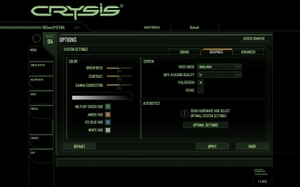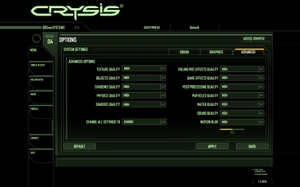Crysis
Publisher: Electronic ArtsWe patch Crysis to v1.21 and run it in DirectX 10 mode with High detail settings. We use 1,280 x 1,024 with 2x AA and no AF to give a reasonably real-world test without the risk that the graphics card will be a limiting factor to CPU performance.
We load a save game in the Relic level and play the game for roughly three minutes, following a strictly defined sequence of actions and movements. We repeat this test three times, or until a reliable set of results is achieved. The consistent results are then averaged to give the figures below.
This is the best way to test how a CPU affects game performance, as the game will be generating AI and physics and game rules for the CPU to perform. A timedemo addresses a CPU in a noticeably different way.
L3 cache doesn't make a huge amount of difference here, and the minimum frame-rate is largely consistent across the Intel and Phenom II X3 alternatives to the Athlon II X4. The big surprise winner is the Phenom II X2 where, at 3.1GHz, its faster core clock benefits Crysis' smoothness by edging it up to a reasonable 25fps. Extra clockspeed seems to do virtually nothing for the Athlon II X4 though, as it does not increase the necessary minimum fps, only nosing up the average slightly.

MSI MPG Velox 100R Chassis Review
October 14 2021 | 15:04











Want to comment? Please log in.